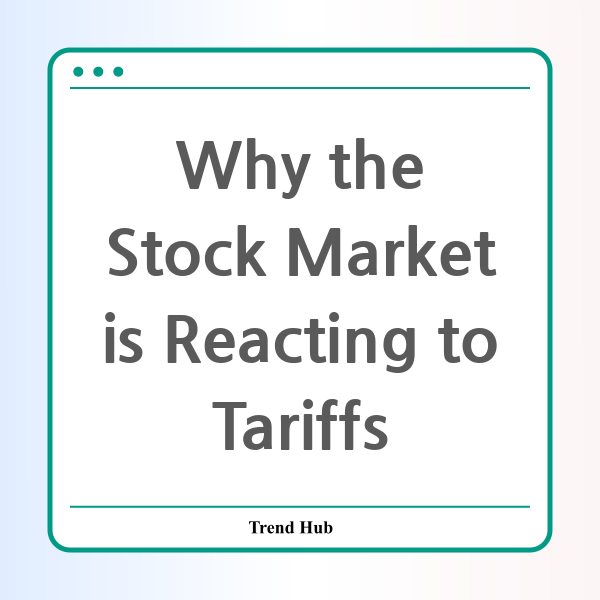* This website participates in the Amazon Affiliate Program and earns from qualifying purchases.

As investors brace themselves for unpredictable shifts in the stock market landscape, the latest tariff announcements by President Trump have ignited fears of a looming trade war. With U.S. stocks experiencing significant after-hours drops, understanding the implications of these tariffs on various sectors is crucial for traders and investors alike.
The President’s declaration of sweeping tariffs, starting at a baseline of 10% on all countries and escalating for specific nations, has prompted widespread concern among market participants. The immediate aftermath saw the S&P 500 ETF plummet by around 2%, and the Nasdaq-100 Index fared even worse, dropping 3.3% in after-hours trading. This increase in tariffs disproportionately impacts companies heavily reliant on imports, prompting notable declines in their stock prices.
Understanding the Tariff Impact
Tariffs, essentially taxes imposed on imported goods, can lead to increased costs for companies that rely on foreign production. Nike, for instance, suffered a 6% decline in its stock price following the announcement, revealing the fragility of companies that depend heavily on international supply chains. Similarly, automotive giants like General Motors saw a dip of 3% as fears of higher production costs loomed large.
The concerns are not just limited to consumer goods and automotive sectors. The technology sector also faced backlash, with key players like Nvidia and Tesla both shedding around 3%. The ramifications of increased import costs can ripple through economies, affecting consumer prices and, eventually, the broader U.S. economy.
| Company | Stock Price Change (%) |
|---|---|
| Nike | -6% |
| General Motors | -3% |
| Nvidia | -3% |
| Tesla | -3% |
| Apple | -5% |
Market Reactions and Expert Analysis
The market's reaction following the tariff announcements has been marked by volatility. Traders initially had hopes that the tariff rates would remain at the lower end of expectations but were met with concerns of much higher rates for specific countries, particularly China, where the effective tariff could reach 54% under the proposed scheme. This uncertainty has led to an environment of caution among traders.
Art Hogan, a market strategist, articulated that the complexity around the tariff announcements exceeded market expectations and revealed a level of unpredictability that investors weren’t prepared for. This sentiment was echoed by other analysts who noted that a more moderate approach might have led to a different market response, perhaps buoying stock prices considerably.
Long-Term Implications for Investors
With the stock market already contending with recession fears and sluggish economic data, the introduction of more severe tariffs complicates the landscape further. The S&P 500 has shown persistent signs of vulnerability, having entered correction territory recently, defined by a 10% slide from its recent highs.
Looking ahead, investors will need to closely monitor how these tariffs evolve and their potential impacts on both U.S. companies and the global economy. While some analysts remain hopeful that negotiations may lead to adjustments in tariff rates, the immediate response from the stock market suggests that caution is warranted.
In conclusion, the current state of the stock market amid tariff announcements underscores the intricate relationship between government policy and market performance. For investors, understanding these dynamics is essential in navigating the turbulent waters of the financial landscape.
* This website participates in the Amazon Affiliate Program and earns from qualifying purchases.